The article The Ethics Of Homesteading is available on http://totalsurvival.net
Sometimes, life gets in the way of what you always just knew you should be doing. Such was the case for me. I grew up in a farming community and, right from being a little girl, I always knew what it was that I wanted to do. Work with animals. I wanted to be a farmer, but somehow life and cost of living and good old-fashioned familial expectations got in the way. I graduated school and college and ended up with a Masters in Creative Writing, then spent many years working in print and online publishing.
In 2008, I decided enough was enough. I went back to being 100% freelance with my writing and editing, and my husband and I started to set up our own farm in North Georgia – Poppy Creek Farm.
As a child, we had kept chickens and cows, so my husband and I began small with just a few hens and a medium-sized garden plot where we grew herbs, peas, beans, tomatoes, peppers, onions and a variety of root vegetables. As an enthusiastic cook, I aimed to grow what I used most of in the kitchen; my idea was always maximum self sufficiency, and my husband was already a keen prepper, so this shaped our beginning endeavors.
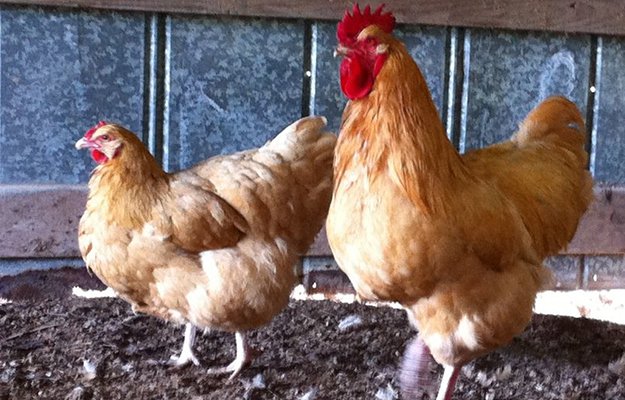

The birds we started off with were hatchery chickens from the local feed store, but it wasn’t long before I realized that this didn’t fit with my overall animal-raising ethos. I believe that in order to truly raise quality food – eggs, meat or milk – you need to start with quality animals. When you are going to be breeding these animals for any period of time (and in a prepping situation, you have to plan for that period to be ‘indefinitely’), you really need heritage animals, in order for them to breed true.
I’m a big fan of the Livestock Conservancy, so I started there with some of my research. Over the following years, I learned more about the breeds and how they fit what we wanted for our farm, and I now raise the birds that work best for me: Orpingtons, Sussex and Barred Rocks. All are heritage birds from breeders who have worked hard to raise excellent birds which conform to the American Poultry Association Standard of Perfection, none from a hatchery. I chose them because of their excellent egg production, and the fact that mature birds have a good body size, and thus do well on the table. Extra roosters are never a bad thing here! I chose birds from reputable breeders, many of whom have since become friends. All the breeds I keep are docile by nature, and this is one of my main requirements; farming is a hard enough job as it is, without trying to work with flighty, crabby animals!



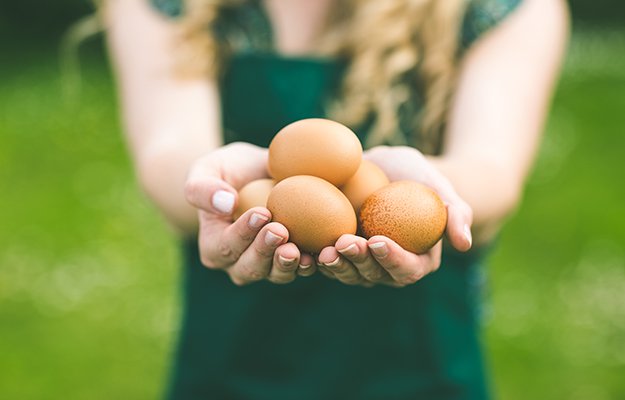
I confess that I also keep a couple of birds simply because they are rare and beautiful, but of limited utility. A dear friend and highly respected lady in the poultry world slimmed her flock down a couple of years ago, and gifted me with a trio of Bantam Mille Fleur Cochins and another of Bantam Columbian Plymouth rocks. They are not the most prolific layers, when they do lay their eggs are small, and they’re far too little to be of any use as a meat bird. However, good quality birds of these breeds are hard to find, so they fall broadly under my header of ‘stewardship’; raising beautiful birds for future generations. At least – that’s how I justify them to my husband.
After the chickens came guineas. I love the idea of guineas, the practice significantly less so. While they have spectacular plumage, and their bug and tick fighting abilities are second to none, the constant noise they make causes me to fear for my sanity. I have tried twice since to keep these gorgeous birds, and it has always ended up the way it did the first time: with the guineas on Craigslist.

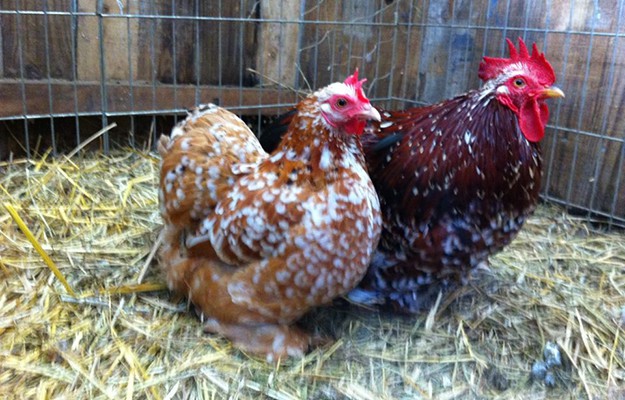
Goats are my other must-have for my farm. I researched and debated at length which of the breeds was best for us; large breeds give a superior quantity of milk, yet the smaller breeds give a sweeter, richer milk. I ended up with Nigerian Dwarfs as my small breed, their milk is high in butterfat and is simply delicious, yielding an impressive amount of cheese from each gallon. They are also easy to handle, impossibly cute, and can be turned out into the most overgrown areas as improbably fast weed-eating machines.
We chose American Dairy Goat Association (ADGA) registered stock from breeders who tested for the common goat diseases – TB, Brucellosis, CAE, CL and Johnes – because many of these diseases that can be found in goats have a human equivalent and can be passed through the milk. Because the milk was going to be consumed by our family, including our child, we felt that this was a top priority. Also, tested animals sell for a higher amount and are more desired by fellow producers. While it is tempting to keep all the adorable kids that are the by-product of wanting milk, we knew that eventually we would have to sell some!

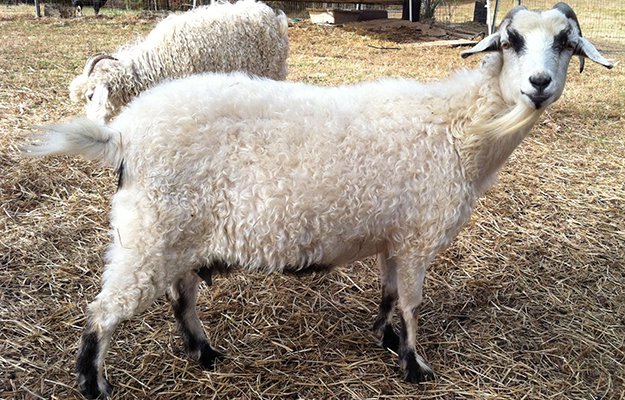
The larger breed took longer to decide on. We knew we wanted one that we could keep for both milk and to raise the excess wethers for meat, but unlike the small breeds – of which the Nigerian is pretty much the only significant milk producer – there were SO many to choose from. Nubians, Saanens and Alpines were all readily available in our area, and we eventually settled on Saanens. These large, white, agreeable animals are dairy through and through, milk-making machines who just keep on giving gallons of milk a day. When we got to the point that no more milk could be absorbed by our family in the form of milk, cheese and ice-cream, and the freezer was full of milk for winter, the local cat rescue was delighted to have real, free milk to raise their orphaned kittens on. After all, cats eat mice, and rodents are the enemy of the farmer!
 report this ad
report this ad
The final caprine addition was Angoras. As a very small child, I was taught to spin and crochet, and I felt that this was a useful skill to add to our prepping arsenal. Two does and a buck were added to our farm the first year, and our herd now stands at three angora bucks, three angora does and three pygora (pygmy x angora) does. Each animal yields up to 1″ of fiber a month, and they are shaved twice a year, giving 3-5lbs of fiber per shearing each. I find the fiber has a high barter value, and have acquired useful items and additional stock by offering it for trade.
Bartering is a vastly underrated tool, in my opinion. I have found that as the economy looks worse and worse, and people’s disposable income lowers, I can have more success bartering than selling. For instance, just in the last few months, I needed to get rid of a bunch of chickens that were not suited to my breeding pens; I breed heavily and then cull heavily to keep only the best birds who are large, thrifty and meeting the standard of perfection, but culls are perfectly useable yard birds for eggs and meat. After selling only a handful through my usual channels, I decided to take a look around the farm and get ready for winter and breeding season.


I added just one line to the bottom of my ‘for sale’ ads: ‘Will trade for gates, cattle panels, t-posts and hay’. My phone started ringing off the hook. Within two weeks, I had moved all the birds, and had obtained enough round bales to last several months, enough gates to finish my fencing, and enough t-posts and cattle panels to stall my barn out into kidding pens. My husband, exhausted from my brutal honey-do list of bashing posts and wiring gates for houdini miniature goats, declared it my greatest idea yet.
Next spring will see me tilling my garden with bunny poop – I have decided that meat rabbits are some of the most productive animals ever; they have large litters, produce a good amount of meat, and even their poop is useful! There’s nothing like it for ensuring a bumper crop of squash and tomatoes, then just add the ash from your winter fires to your tomato plants and you’ll never have had a better garden.
Spring also brings baby goats and heralds the turning on of the giant cabinet incubator. Each year, I hatch two batches of eggs from each of my breeding pens to ensure fertility before I start selling hatching eggs. Then each year I select one main breed to concentrate on, and I work to improve my stock of that breed through extensive breeding and culling.

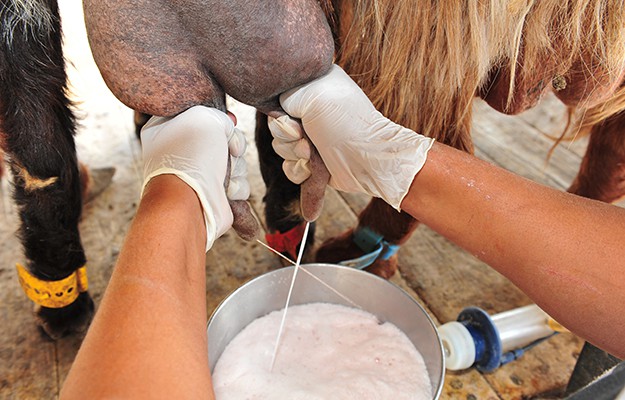
I will also be milking all the does who kidded in spring. Some will have gone off to my friend’s farm to spend the season on the show circuit, while the ones who remain with me will either be milked, dried up and turned out for a season off, or re-bred for fall kidding.
Summer means canning in an already stifling hot kitchen, and my husband asking how many more ways I can find to feed him the glut of squash we are experiencing from our garden. You can never eat too much squash, right?
In late summer as it cools slightly, I start sowing root vegetables at two-week intervals for a continuous crop throughout later summer, fall and winter, because there are few things more rewarding than seeing your Thanksgiving and Christmas feasts filled out with your own produce!
I like all my fall kidding to be done by the end of September so that I don’t have to run expensive heat lamps for them as the weather turns cold, and there’s nothing more pathetic than a shivering baby goat.

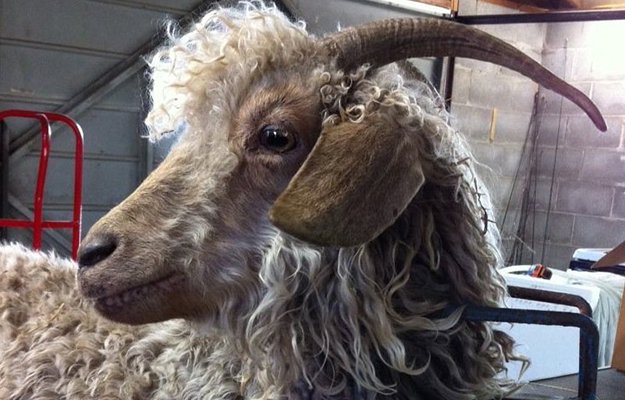
Through winter, we simply maintain the bare minimum to provide for our family; milk from the goats, root vegetables from the garden, the occasional fresh chicken or rabbit. And, of course, hunting season! This means plenty of venison and duck.
So that’s me and my family, and I am looking forward to sharing my ideas with you through this blog to perhaps help you make more of your farm, and prepare for whatever eventualities might be in our future.
I hope you learned a lot with these ethics of homesteading.
Like this post?
Be sure to like us on Facebook (button below) so you can be the first to know about latest survival tips and off the grid living skills.
Comments
comments
Suggested Videos
This Article Was Found On pioneersettler.com Read the Original ArticleRead More Here: The Ethics Of Homesteading
No comments:
Post a Comment